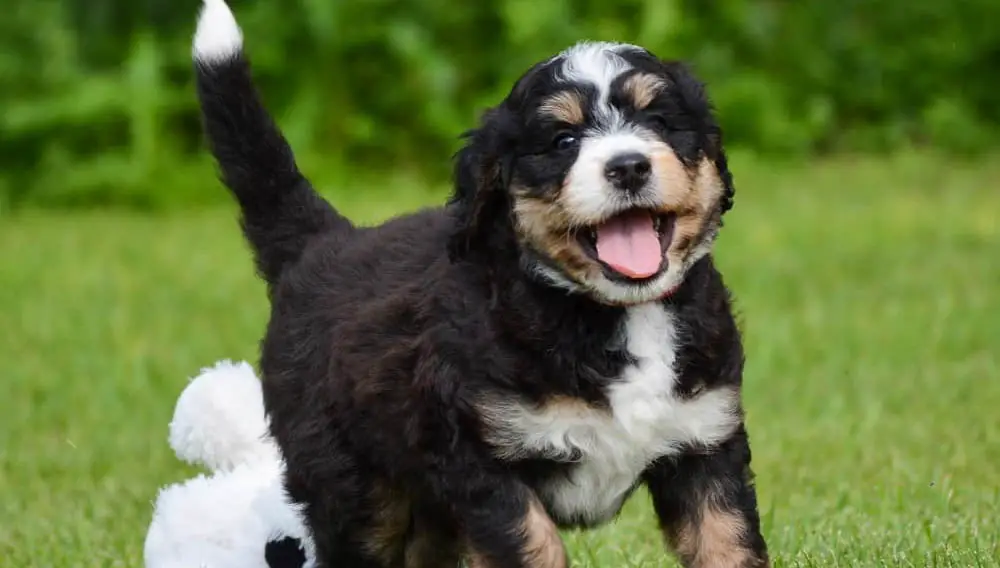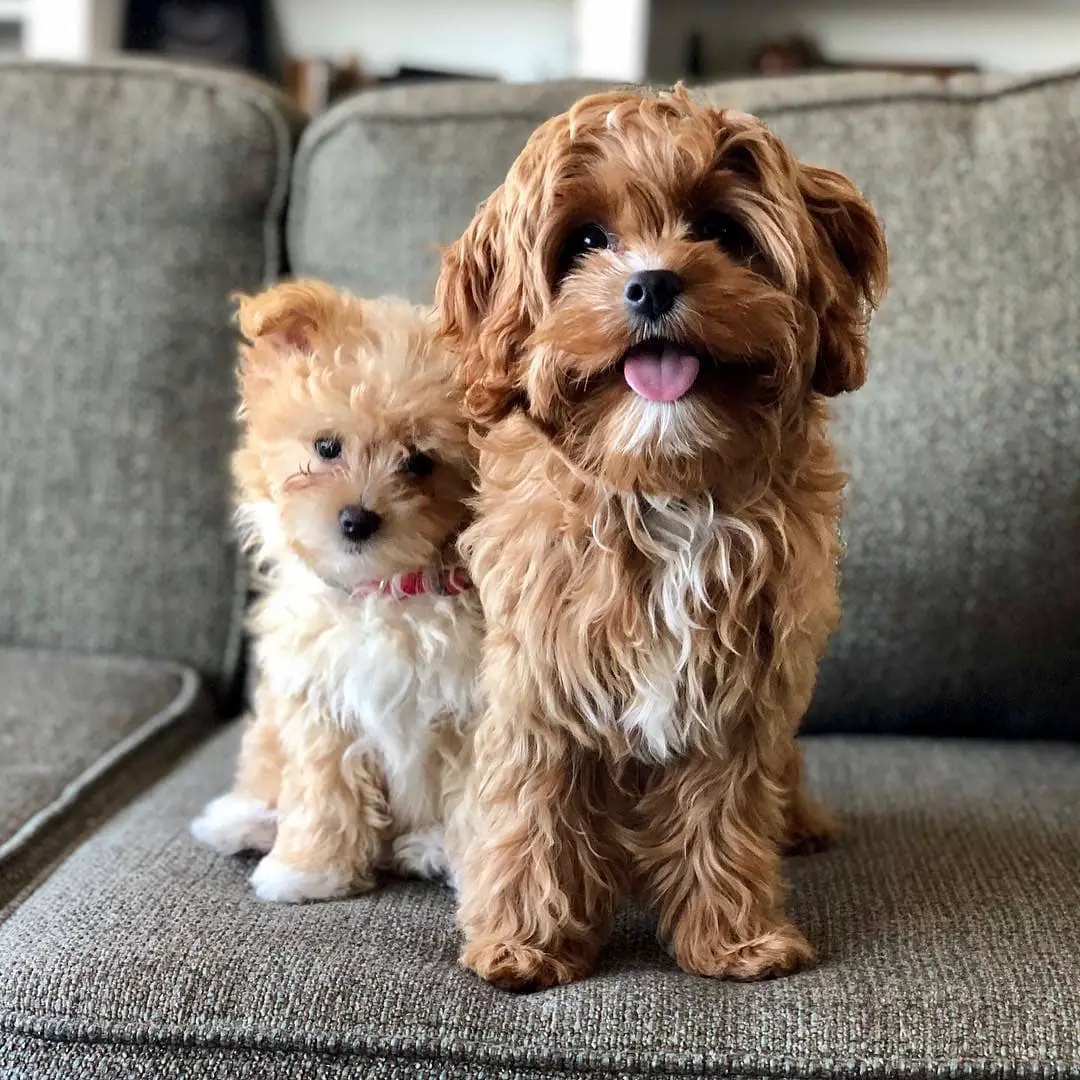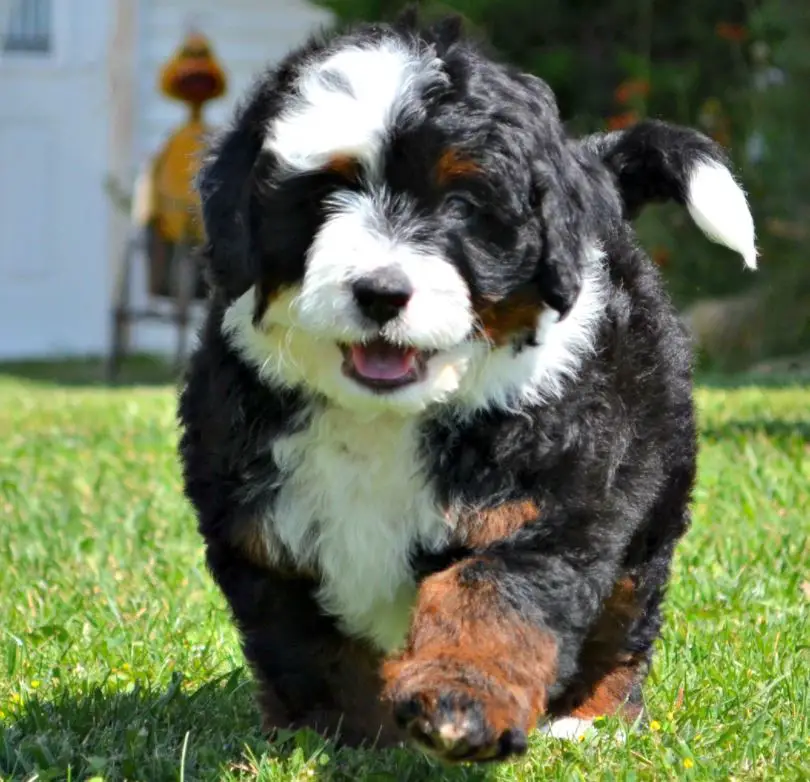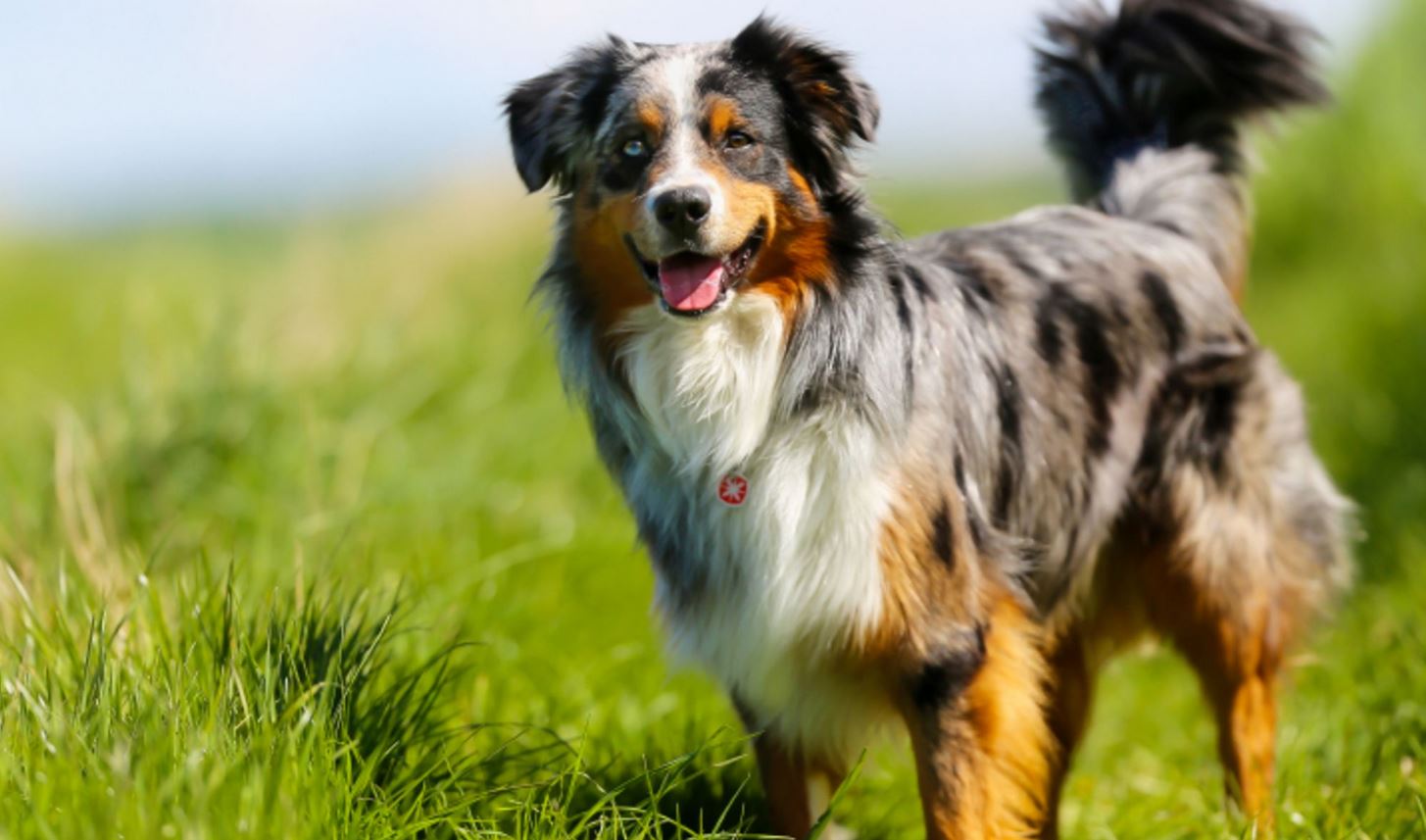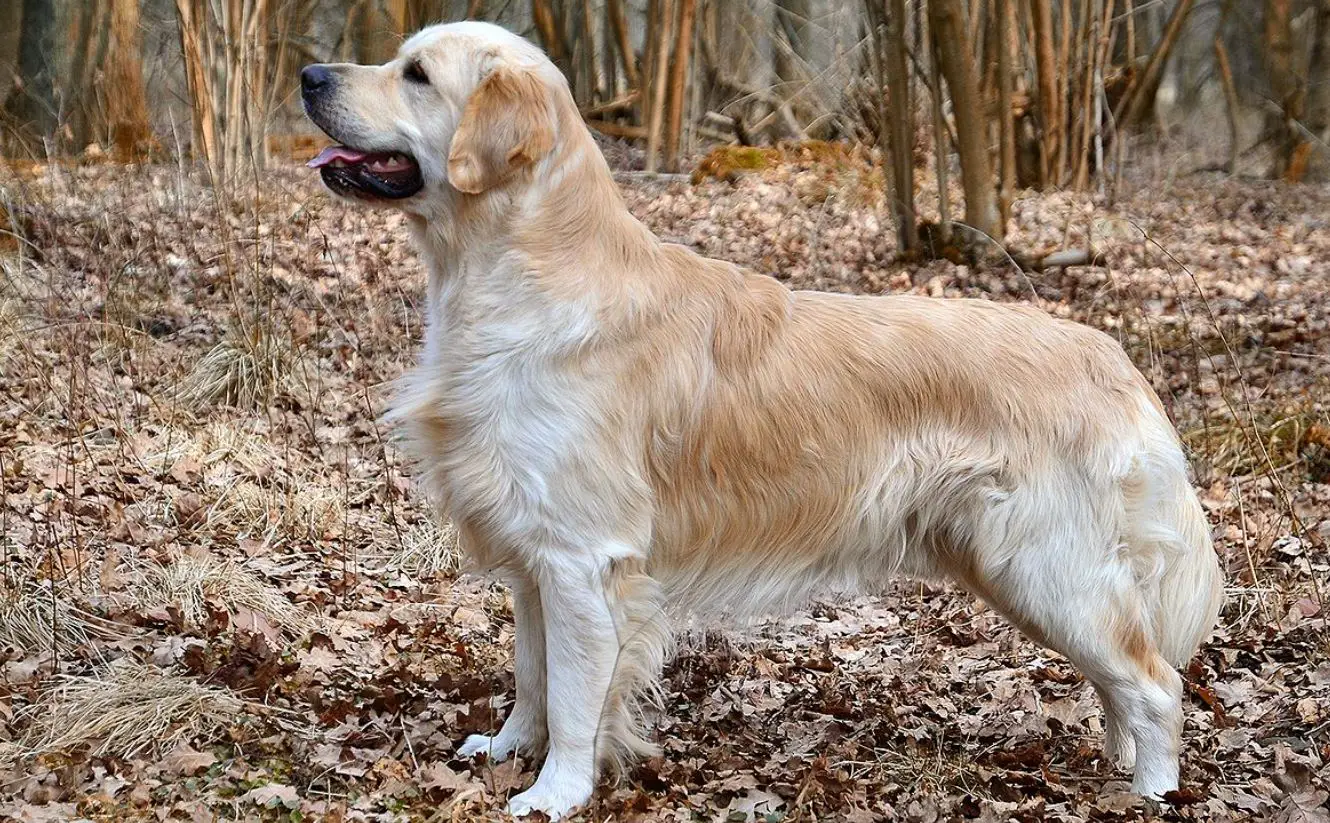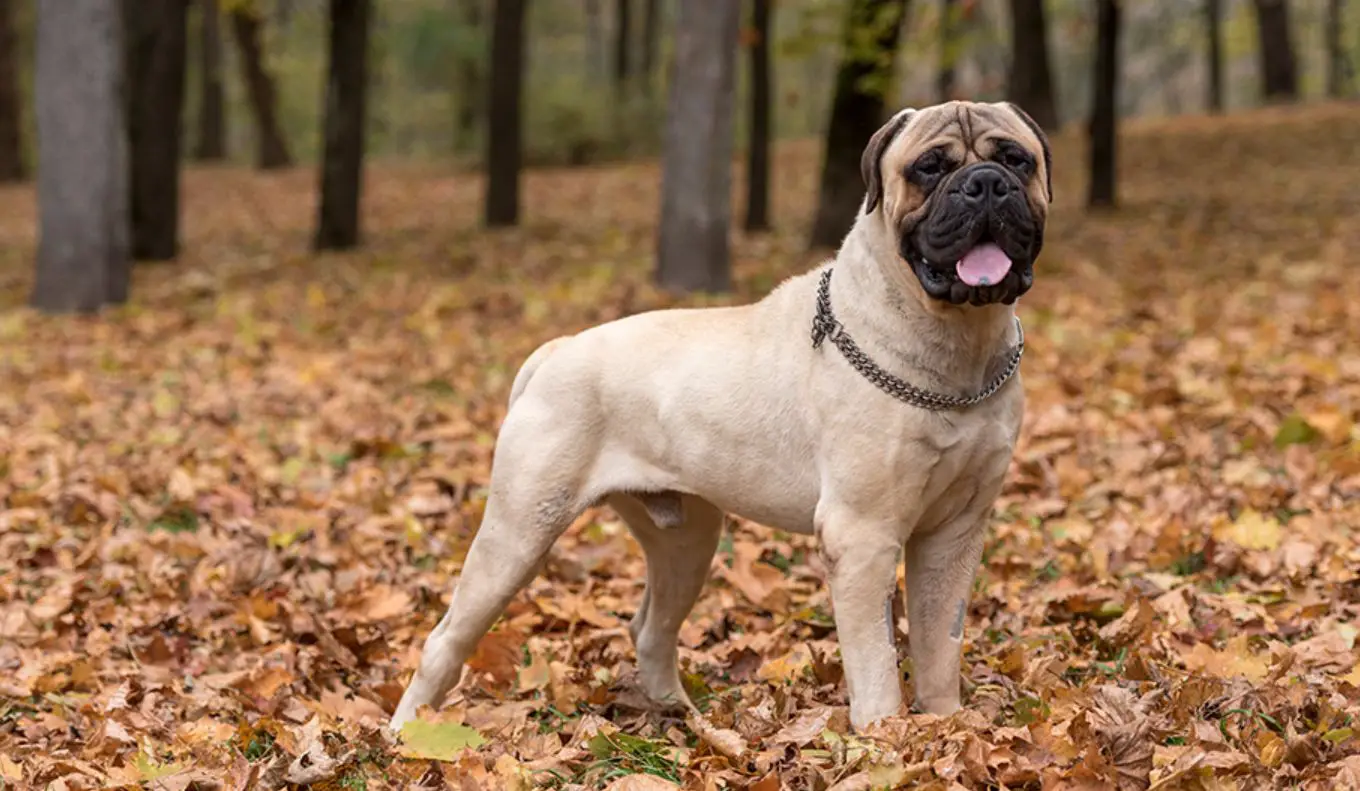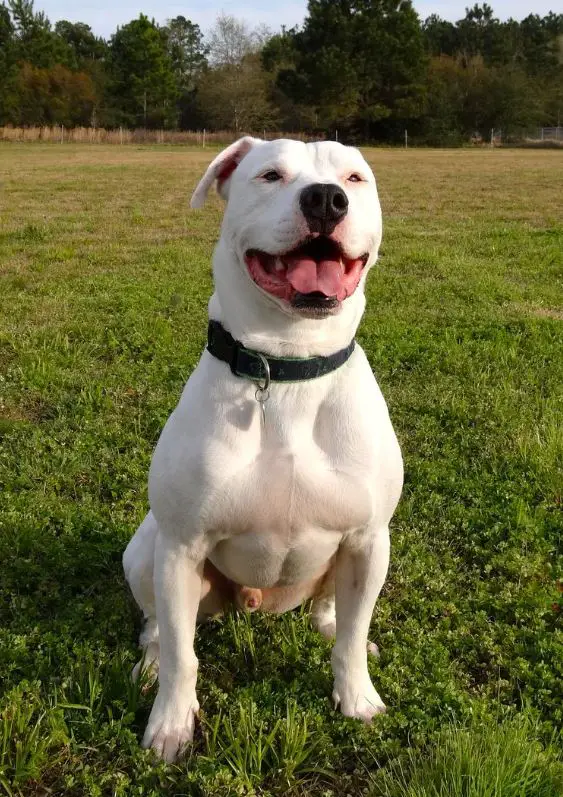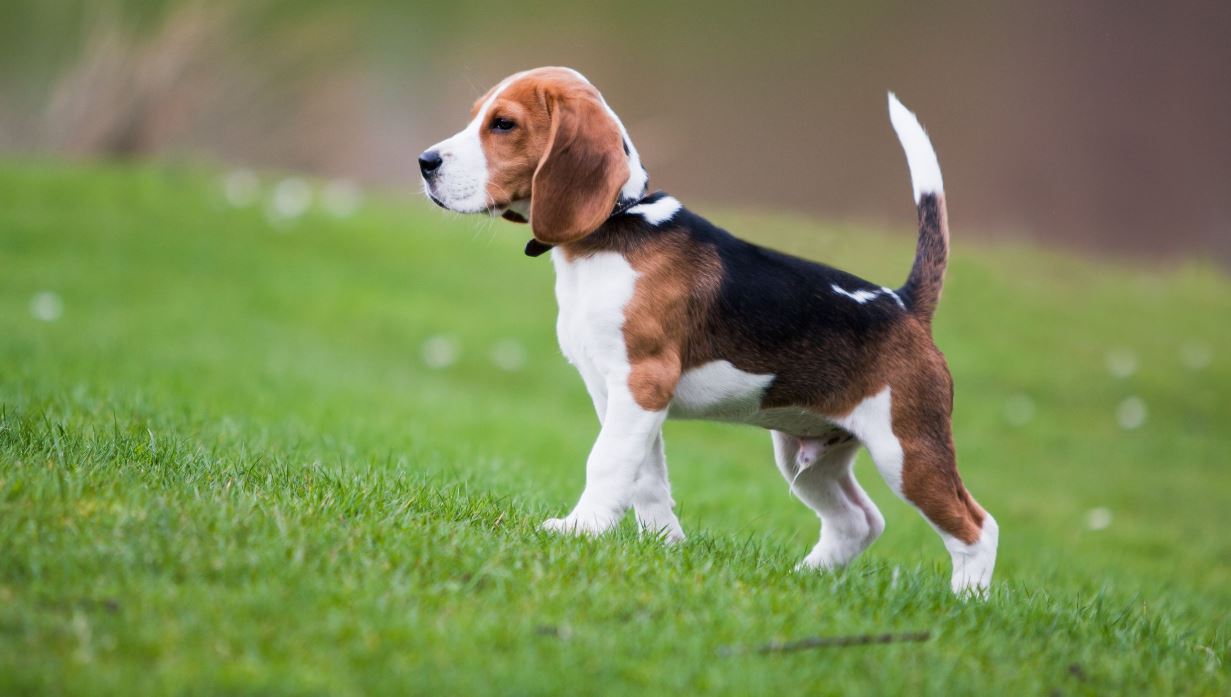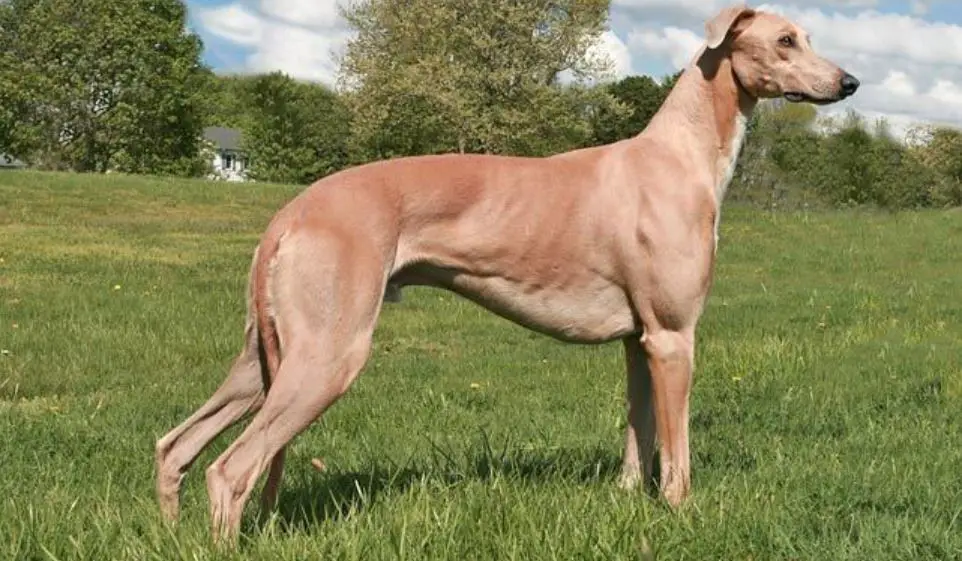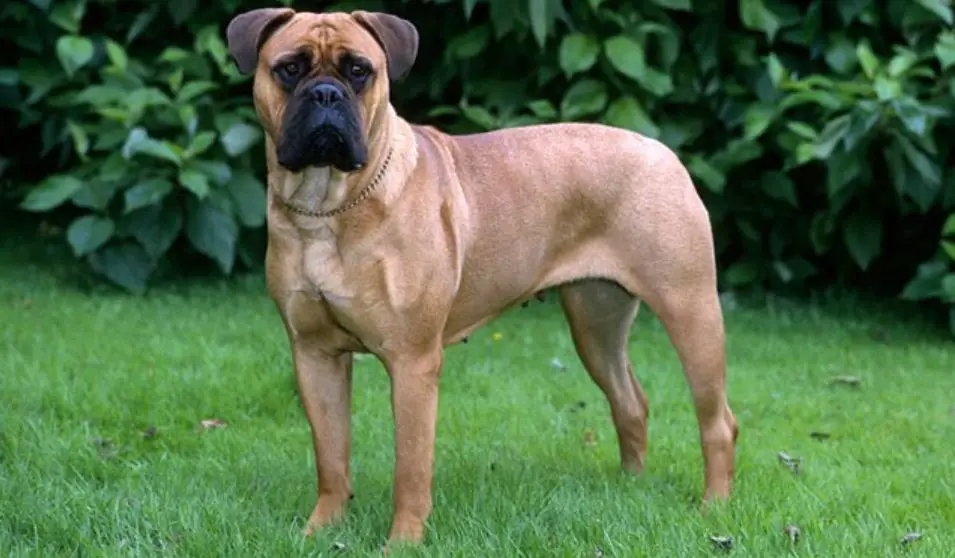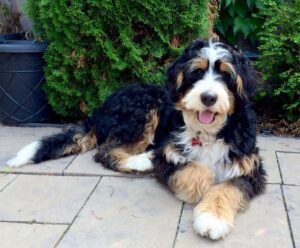
The cross between a female Bernese Mountain Dog and a male Poodle results in an amazing family pet, the Bernedoodle. As this is one of the newest hybrid breeds, however, many people still don’t know exactly what to expect when welcoming one of these lovable critters into their homes.
Let’s examine the Bernedoodle, or according to Dogzone.com, also known as Bernese Mountain Dog Poos, Bernepoos, Bernesepoos, or Bernesedoodles to see if they might be a good fit for your home.
Bernedoodle Overview
1. SIZE
Bernedoodles are bred to be one of three sizes. Fully grown at around 18 months, a standard Bernedoodle tends to be 23-29 inches (58-73 cm) tall and could weigh up to 90 pounds (40 kg). Miniature Bernedoodles grow to be around 20 inches (50 cm) tall and weigh anywhere from 25-45 pounds (11-20 kg). Tiny, or Toy Bernedoodles only measure up to 12-17 inches (30-43 cm) and weigh as little as 24 pounds (10 kg) when fully grown. Loverdoodles.com notes that generation could also impact the size of your Bernedoodle significantly.
2. COAT
One of the main motivations for breeding the Bernedoodle was having a dog with a hypoallergenic coat. While any properly bred Bernadoodle won’t shed much, their coats can be vastly diverse. Straight, wavy and curly-haired Bernedoodles exist, with colors that vary from black, brown, white, tricolor and sable, as shown here on Welovedoodles.com.
3. GROOMING
While they are bred not to shed, Bernedoodles still need to be groomed regularly, and their hair needs to be cut from time to time. Bernedoodles should however not be clipped until they are at least 7 months old, as this may cause irreversible damage. They also need to be bathed every 4-8 weeks.
4. PERSONALITY
Bernedoodles are loving and loyal companions, as they were bred to be. They are kind and calm, both to humans and other animals. This also means that they can be quite needy. Puppies are also known to be quite stubborn, even though they are highly trainable.
5. TEMPERAMENT
They have excellent temperaments. They are caring and nurturing with young children and playful with teenagers. They are placid and calm like their Bernese parent, while also being goofy and fun like a Poodle.
6. BARKING
While they have a strong authoritative bark, their timid nature means that they rarely use it. They may, however, make different sounds in order to communicate with you.
7. AS A FAMILY DOG
The Bernedoodle is a perfect companion for a family. Loving, cute, and seemingly always happy as long as they are near people. They crave human attention and will make sure to entertain you and your family.
8. AS A GUARD DOG
Unfortunately, a Bernedoodle’s love is completely unbiased, and they’ll sooner cuddle up to a potential invader than scare him away. While they do have a strong bark, they are unlikely to use it, and their cute and cuddly features also mean that they are not very intimidating.
9. INTELLIGENCE
Bernedoodles can be stubborn and naughty if not trained correctly, but rather than a negative attribute, this should be seen as a testament to their intelligence. A well-handled Bernedoodle is very trainable. They are known to change their barks and sounds to communicate different messages to their human companions.
10. LIVING CONDITIONS
The Bernedoodle is versatile enough to adapt to most living conditions. Unlike their mountain-dwelling parent, they won’t be affected by heat. While they will enjoy having a yard to play in, they will mostly want to spend time with their humans indoors.
11. EXERCISE
Bernedoodles require active homes. They need around 60 minutes of exercise daily. They will also get bored easily if they do not get an opportunity to play, and could then potentially make a nuisance of themselves.
12. HEALTH ISSUES
As a hybrid, Bernedoodles are generally healthier than their parents. While most Bernedoodles can go through life without any major problems, Trendingbreeds.com explains that there is always a possibility of Elbow Dysplasia, Hip Dysplasia, Von Willebrand Disease and skin conditions.
13. LIFE EXPECTANCY
Bernedoodles can live up to a healthy 15 years and as smaller breeds tend to live longer, miniature variations may live up to 17 years.
14. COST
Bernedoodle puppies can go for anywhere from $2000 to $4000 and if you want a Bernedoodle with a special coat or in an abnormal size it could easily be more than $5000
THE HISTORY OF BERNEDOODLES

Sherry Rupke first successfully bred the Poodle – Bernese Mountain Dog hybrid in 2003, although we can assume that these crossbreeds have occurred naturally in the past. This makes the Bernedoodle one of the youngest species of dogs. This also means that the breeders had all the knowledge and technology of crossbreeding history at their disposal, which is why the Bernedoodle is such a successful hybrid. It was bred to be a loving companion, that is allergy-friendly and healthier than its parents. The Bernedoodle is a success on all three counts.
PROS OF OWNING A BERNEDOODLE
The Bernedoodle has shot to popularity among dog owners for a variety of very good reasons.
1. FAMILY FUN FOR ALL
Firstly, it’s love at first sight, as these charmers who look like they should be on a children’s toy display can steal anyone’s heart. This love is then reciprocated, they become infatuated with their humans and will shower you with affection.
2. DON’T SHED MUCH
Secondly, they have been successfully bred to have certain desirable characteristics. They don’t shed much, their coats can be hypoallergenic, they are loving and friendly, and they are healthier than their ancestors.
3. INTELLIGENT AND EASY TO TRAIN
Because they inherit some of a Poodle’s intelligence, they can be very well trained, provided that they are handled well and get enough attention.
4. FUN-LOVING AND PLAYFUL
They are fun-loving and playful, so they can entertain children and adults, while also being calm and gentle with toddlers. They also, in most cases, are quite friendly to other animals, so could fit in with a family keeping different animals.
5. GOOD TEMPERAMENT
They are also capable of adapting to colder climates, because of their Bernese heritage. Their temperament also allows for strangers and other animals interacting with them without owners having to fear that they may be aggressive.
6. VARIETY OF COATS AND COLORS
Bernedoodle’s variety of coats and colors mean that you can get one to match your personal preference.
7. LOYAL AND ATTACHED
Finally, because they are so loyal and attached, they are great walking and exercise companions, they won’t leave your side, even if they aren’t on a leash.
CONS OF OWNING A BERNEDOODLE

While I don’t believe that any breed of dog can have “cons”, there are a number of considerations to keep in mind before taking a Bernedoodle into your care.
1. NEED A LOT OF ATTENTION AND AFFECTION
Firstly, you need to be committed to being a dog owner. They are very dependent, and will easily become depressed or naughty if they don’t get enough attention.
2. NEED A LOT OF PHYSICAL AND MENTAL EXERCISE
Apart from just giving it love, Bernedoodles also need a lot of physical and mental exercise, so you will have to be able to commit time to ensure they get it. They might not be a good fit for novice owners.
3. NEED A LOT OF GROOMING
Although they don’t shed much, they still need a lot of grooming.
4. PUPPIES CAN BE NAUGHTY AND HEADSTRONG
Bernedoodle puppies have a reputation of being naughty and headstrong, but this can easily be avoided with early and effective training.
5. CAN STILL INHERIT SOME OF THE HEALTH PROBLEMS FROM POODLES OR BERNESE MOUNTAIN DOGS
They can still inherit some of the health problems from Poodles or Bernese Mountain Dogs, but this is less likely if they come from a reputable breeder.
6. CAN BE VERY EXPENSIVE TO BUY
Finally, because of their booming popularity, and being a designer hybrid, Bernedoodles can be very expensive to buy. This has also led them to become more and more popular to puppy mills, who breed them extensively and irresponsibly in order to capitalize quickly.
TIPS FOR BERNEDOODLE OWNERS
- Training a stubborn Bernedoodle pup is done most effectively by using positive reinforcement. Using negative reinforcement (scolding, spanking, punishing) may just cause them to rebel and be even naughtier. Here is a video by Eric from Nebraska Dog trainers giving some insights into training a Bernedoodle.
- Socializing Bernedoodle pups early will help ensure that they grow up to be loving and friendly to everyone. If they aren’t socialized they may end up being anxious around strangers.
- While Bernedoodles adjust easily to fit most lifestyles, they have extreme separation anxiety. So, whatever your living situation is, won’t matter as much, as long as you spend a lot of time with your Bernedoodle.
- They are quite active, even though they might love snuggling up to you, they have to be exercised daily. Whether you play with them outside, take them for a jog or a hike, or simply take them to a dog park, they need to get rid of their excess energy.
- The curlier the coat of the Bernadoodle, the less they will shed. So if you experience problems with allergies, opt for a Bernadoodle with more curls. This also means that they will require more brushing.
- They love food, so you’ll have to keep an eye on their weight.
CONCLUSION
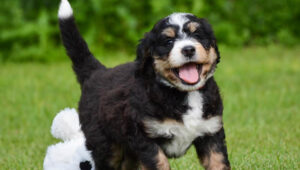
In conclusion, like all dogs, but for their very own reasons, Bernedoodles are incredibly special. They will make a lovely addition to any home, being loyal and loving, gentle yet playful and intelligent but also quirky. With the benefit of the latest science ensuring their genes are as good as they can be, meaning they are less prone to illness, have longer lifespans, shed less, and combine the best qualities of their parents.
In return, Bernedoodles really don’t ask for much. All they need is a lot of love and a little bit of training.
If you can afford to devote time to this four-legged friend, it will make it worth your while. If, after reading this article, you haven’t been able to come to a decision yet, here’s a video of Franklin having some fun with his human that might help you make up your mind.

